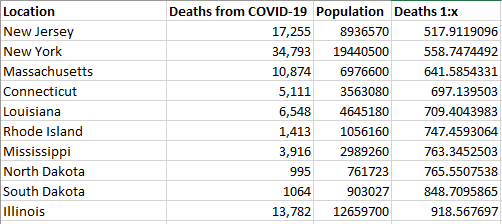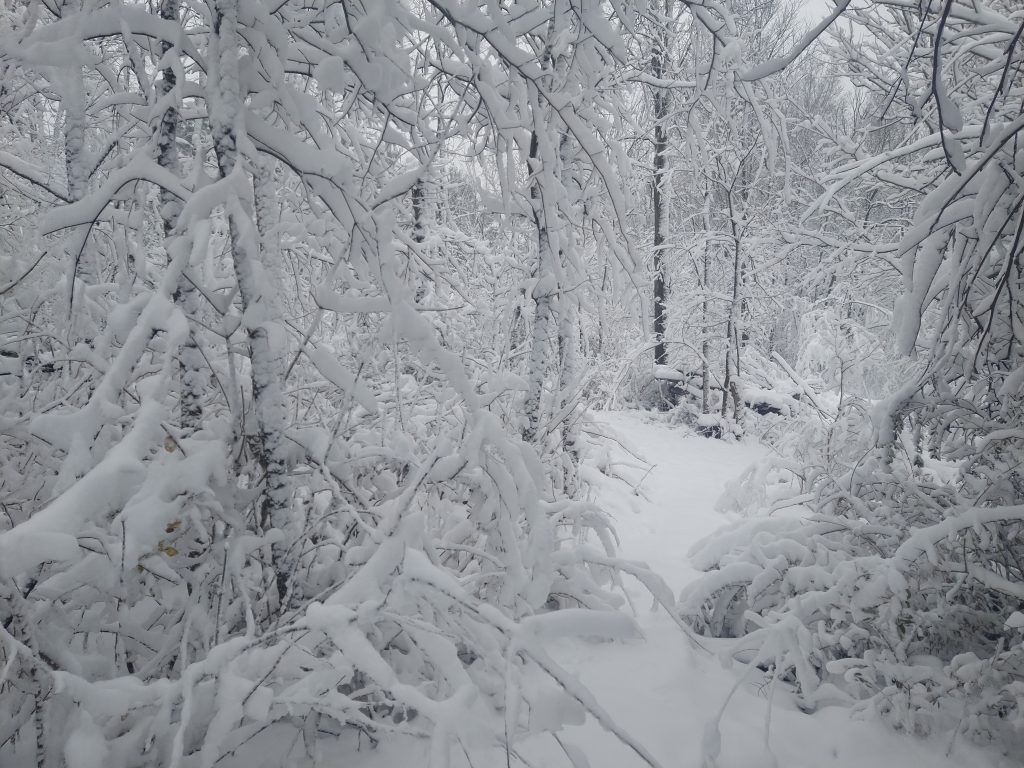The big sugar maple in our front yard has budded out — no more sap from it this year!
Category: Miscellaneous
First Buzzard Sighting – 2021
Anya didn’t close the chicken tractor well today. When I looked outside to check on the chickens, I saw Sunshine right by the house. We headed out, rounded up the three escapees, and refilled their water. On the way back into the house, there were three buzzards flying over the house.
On Privilege
FU Investing
It’s important to remember the difference between capitalization through offering shares and market value. Say I have a company that I’m going to take public. Forget all the real-world stuff that goes into an IPO — I put one million shares of my company out there with a target price of 10$ a share, and initial investors purchase all of the shares at my target price. I now have ten million bucks in exchange for the investor’s interest in my company. Now you want to buy a share of my company. I had a million shares and sold them all. You aren’t buying a share from *me*. You go to someone who owns shares in my company and offer to buy one. Well, they paid 10$ yesterday, so they’re not going to sell that share for ten bucks. You offer them 11$, though, and they say ‘sure’.
My company is doing well (“the fundamentals” are good), people anticipate I’m going to start offering dividends or I’m going to start using a new manufacturing technique and reduce cost by 10%. A lot of people want shares, so they start offering to pay 20$ for a share. And plenty of people who paid 10$ a share want to bank their profits, so there are shares available to buy. Even though my company shares are selling at 20$, which makes my market capitalization twenty million dollars, I only have ten million of that. The other ten million went as profit to investors who sold shares. Same when the stock price goes down — I’m not hitting sales targets, my planned IP filing doesn’t go through, etc and shares are down to 5$ … I still got that ten mil from my IPO; investors just own their share of my company with a value of 5 mil.
A company that isn’t doing well can still be worth millions on paper. This is where short selling comes in. Think about buggy manufacturers when automobiles became “a thing” — if they were publicly traded companies, you could have anticipated that the value of the stock would go down. You borrow a share of Lisa’s Buggy Company from someone — it’s worth 10$ today. You sell it and pocket the ten bucks. A month from now, you buy a share of Lisa’s Buggy Company for 3$ and give the repurchased share back. You’ve score 7$. Now, realistically you don’t just find someone who owns a share and borrow it from them. You ‘borrow’ the share from a brokerage. You pocked 9.50$ initially because you give the brokerage 0.50$ for letting you ‘borrow’ that share for a month (like interest when you borrow money).
If you borrow a 10$ share and are going to return it in a month, no one knows how much that’s going to cost you in a month. You’re hoping it’s less than 10$. But, in a case like GameStop, that 10$ share you borrowed is worth 320$. Brokerages hold what amounts to cash collateral to cover your short — because they don’t want to be out that 320$ share when you cannot afford to repurchase it. And, as the share value goes up, they may need more collateral to cover your short. At some point, you just don’t have any more cash to throw into collateral. You’re screwed (and have to repurchase those borrowed shares at whatever the price happens to be now). Or the broker doesn’t want to keep risking it — they call in their loaned share so they can sell it and keep the 320$.
Thing is? Having shares trading at a couple hundred bucks instead of a couple bucks doesn’t change the real trajectory of in-person retail sales of physical game media and equipment (i.e. the underlying logic that led investors to short GameStop in the first place). It doesn’t give GameStop half a billion dollars they can use to move into a new, more profitable, market space. AMC are an interesting, somewhat similar, case. AMC have, to a lesser extent, gone through the same thing as GameStop. Except they also happened to have planned to issue an additional fifty million (or so) shares of stock to raise money. Had the offering gone through when the stock was trading at 2$, they’d have only raised another 100 mill. Had they hit the 20$ a share price the stock peaked at, they’d have raised a billion. IIRC, they brought in a little over 300 million — enough to wipe out a bunch of debt and probably secure operations through the pandemic (if that means summer/autumn). And, I expect, there are a LOT of people who (once vaccinated) are really eager to go do *things* like overpay for popcorn while watching movie on a big screen. This FU investing to screw over massive shorts may have saved the company.
First Robins of 2021
Military Intel, Russia, and COVID
As I’m reading that Russia tripled their reported COVID death toll, I cannot help but recall an old rule of military intel analysis. If the report is a good thing (e.g. amount of grain produced this year), halve it. If the report is a bad thing (here, the number of people dead from a virus), double it. I never took the maxim literally, but rather thought of it as a reminder that ‘the bearer of bad news’ was not something you wanted to be within the Russian government. Thus numbers picked up from internal reports were apt to be CYA inaccurate.
Not sure if that rule was meant to apply to revised numbers (basically our fake numbers are off by a power of ten, so we’re going to adjust within the half/double rule to produce stats that are within the realm of possibility) or if not (reality was so readily apparent that the official numbers had to be revised close to reality).
School’s out for winter
My local school district is moving to remote learning for what’s left of December and a few weeks in January. Not unexpected, and a part of the reason we chose a different learning option for Anya this year. The Superintendent’s message highlights the two big problems I expected with in-person learning. Firstly, 28 positive cases resulted in 467 quarantined individuals. That’s about 16 people in quarantine for every infected individual. The district had about 3,000 students before some percentage opted to use virtual learning this year. Add some 300 staff — they’ve had about 15% of the school out in quarantine in the past three weeks. And that’s before any increase in infections from Thanksgiving. Secondly, people who send their kids to school with COVID-like symptoms (I believe they have a special nurse’s office in each school for those kids to hang out in all day so people who have to swing by the nurse’s office to get medication or a scrape patched up aren’t exposed to a room full of sick kids) and even while awaiting test results.
Liberatarianism is great in theory … but, in practice, the entire point of the belief system is that you’re free to make whatever choice you decide to make. Even if you want to ignore the bears.
One in x covid deaths by state
I read in Forbes that one in 800 people in South Dakota has died from COVID — which made me wonder where other states fall on that spectrum. Mostly better — the Dakotas are eight and nine on the list. It looks like 1 in 518 people in New Jersey have died, 1 in 559 New Yorkers.
Winter Wonderland
Autumn Wrap-up and Winter Projects
Autumn is coming to a close. We had an great growing season this year — I covered the lettuce beds with fabric tents three or four nights in November because temps would be near freezing. We had a few nights where our small pond froze on the surface, but tomorrow night will be the first sustained sub-freezing temperature. I got a bit of a late start to outdoor gardening because we rebuilt the garden beds in a sunnier location, but I still managed a 200 day growing season. Adding another six weeks for the seeds started indoors, I had plants growing for 244 days — about 2/3 of the year! Moving the beds to a sunnier location greatly increased productivity, and the compost in the garden area has turned into a large pile of dirt. We’ve been adding new stuff to the north side of the pile, and I’ve been moving everything south as I turn the pile. It is impressive how much the pile of grass and leaves shrinks down as it decomposes. In early autumn, I put about 16 cubic feet of compost into the garden beds to make a lettuce and kale bed. Yesterday, I amended another fifteen cubic feet of the lettuce bed. Anya and I used two cucumber A-frame trellises and a few of the tomato trellises to create a structure and covered the lettuce bed with greenhouse plastic. Hopefully we’ll be able to continue growing lettuce throughout the winter. I also plan on planting the broccoli, brussle sprouts, and cabbage under the cover next April.
I was worried the chicks we got in August would be too small when the temps dropped, but they are fifteen weeks old today. They love being outside and fluff up really big when it gets cold. Both the coop and chicken tractor have a wide roost so they can keep their toes under their warm feathers.
In the next few weeks, we’ll build some nesting boxes and get the coop finalized. I also want to finish making packets for the seeds we harvested this year and file them into my seed storage boxes. In the next week or two, I will be making a lot of candied almonds — vanilla cinnamon candied almonds, maple roasted salted almonds, and some plain candied almonds — for us and to give away to neighbors.
This winter, I want to finish the crochet blanket I am making for our family room. It should be a thick, warm blanket that we can all snuggle under. I want to finish Anya’s new Peppermint Swirl dress. I also want to make her micro-corduroy dress/tunic/shirt to replace the one she outgrew this past year. Both will be worn in the spring/summer, but sewing is a cold/snowy day activity for me.




